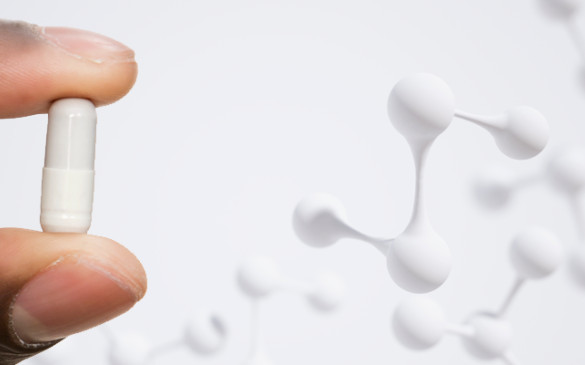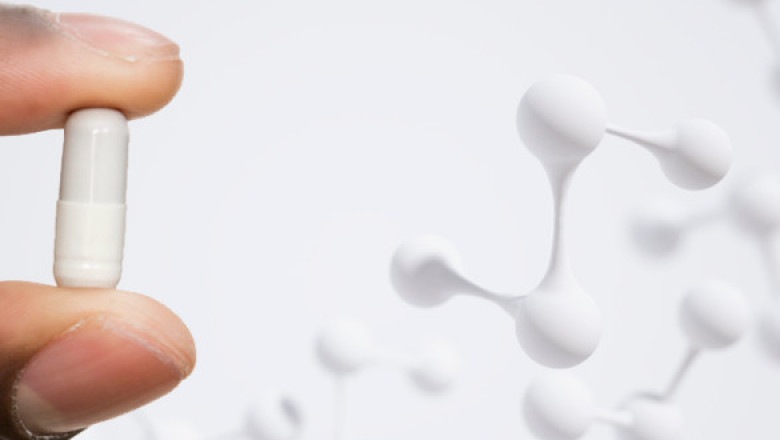views
Heartburn and acid reflux are common digestive issues that affect millions of people around the world. These conditions can range from mild discomfort to severe pain that interferes with daily life. Over the years, several medications have been developed to treat these problems— Ranitidine 150 mg was once among the most popular and widely prescribed.
In this article, we’ll explore how ranitidine works, its role in treating heartburn and acid reflux, and why its use has declined due to safety concerns. We'll also look at alternatives for those still seeking relief from these uncomfortable conditions.
What is Ranitidine?
Ranitidine is a medication that belongs to a class of drugs known as H2 (histamine-2) receptor antagonists, or H2 blockers. These medications reduce the amount of acid the stomach produces.
Ranitidine was originally sold under the brand name Zantac and became one of the most prescribed medications for treating heartburn, acid reflux, ulcers, and related stomach acid conditions.
Understanding Heartburn and Acid Reflux
Before diving into how ranitidine works, it’s helpful to understand what heartburn and acid reflux are.
🔸 Acid Reflux
This occurs when stomach acid flows backward into the esophagus, the tube that connects your throat to your stomach. It can cause a burning sensation in the chest or throat, known as heartburn.
🔸 GERD (Gastroesophageal Reflux Disease)
When acid reflux becomes chronic or severe, it's often diagnosed as GERD. This condition can lead to esophageal damage if left untreated.
How Ranitidine Works to Relieve Heartburn and Acid Reflux
Ranitidine works by blocking H2 receptors in the stomach lining. These receptors respond to histamine, which signals the stomach to produce acid.
By blocking this signal:
-
The stomach produces less acid
-
There’s less acid to backflow into the esophagus
-
Irritation and burning associated with reflux and heartburn are reduced
✔️ Key Benefits of Ranitidine:
-
Reduces frequency and severity of heartburn
-
Helps heal stomach and esophageal ulcers
-
Useful for preventing symptoms when taken before meals
-
Effective in nighttime acid control
Who Was Ranitidine Prescribed For?
Ranitidine was used in a variety of patients, including those with:
-
Occasional heartburn or indigestion
-
Frequent acid reflux symptoms (2+ times per week)
-
GERD (Gastroesophageal Reflux Disease)
-
Peptic ulcers or Zollinger-Ellison syndrome
-
Stomach irritation from NSAIDs
It was available over the counter (OTC) in lower doses and by prescription in higher doses.
Dosage and Use
For occasional heartburn:
-
75 mg or 150 mg taken 30–60 minutes before eating can prevent symptoms.
For more severe or frequent symptoms:
-
Prescription doses ranged from 150 mg twice daily to 300 mg once daily, usually at bedtime.
It was generally taken with or without food, depending on the individual's needs and the doctor’s advice.
Why Was Ranitidine Popular?
Before the rise of proton pump inhibitors (PPIs) like omeprazole and esomeprazole, ranitidine was considered fast-acting, well-tolerated, and effective. It could relieve symptoms in as little as 30 minutes and provided relief for several hours.
Compared to antacids, ranitidine:
-
Controlled acid at the source (production)
-
Was longer-lasting
-
Didn’t require frequent dosing
The Downfall: Ranitidine Safety Concerns
In 2019, a major turning point occurred for ranitidine. Independent testing found that many ranitidine products contained N-Nitrosodimethylamine (NDMA), a potential carcinogen (cancer-causing agent).
NDMA was not intentionally added to ranitidine, but it was believed that under certain storage conditions or during digestion, the molecule could break down and form NDMA.
⚠️ As a result:
-
The FDA issued recalls and warnings.
-
By April 2020, the FDA requested all ranitidine products be removed from the U.S. market.
-
Many countries followed suit, pulling ranitidine from shelves.
What Should Former Ranitidine Users Do Now?
If you used to rely on ranitidine, don’t panic. There are safe and effective alternatives available today:
🔹 Other H2 Blockers:
-
Famotidine (Pepcid) – Safer, does not form NDMA, and is now the preferred H2 blocker.
-
Cimetidine (Tagamet) – Another alternative, though it has more drug interactions.
🔹 Proton Pump Inhibitors (PPIs):
-
Omeprazole (Prilosec)
-
Lansoprazole (Prevacid)
-
Esomeprazole (Nexium)
These medications provide longer-term acid suppression, especially useful for GERD or ulcers. However, they may take 1–4 days for full effect.
Natural and Lifestyle Alternatives
In addition to medication, lifestyle changes can help manage heartburn and acid reflux:
-
Eat smaller, more frequent meals
-
Avoid trigger foods (spicy, fried, chocolate, caffeine, alcohol)
-
Don’t lie down immediately after eating
-
Elevate the head of your bed
-
Maintain a healthy weight
-
Quit smoking
These changes can reduce dependency on medication and improve quality of life.
Conclusion
Ranitidine was once a go-to medication for heartburn and acid reflux due to its effectiveness and convenience. It worked by reducing stomach acid production, easing the burn and discomfort associated with acid reflux. However, due to contamination concerns, it is no longer available in many parts of the world.
Thankfully, safe and effective alternatives like famotidine and PPIs are widely available. If you’re experiencing persistent heartburn or acid reflux, it’s essential to consult with your healthcare provider to choose the best treatment plan for your needs.
Heartburn is more than just discomfort—it can signal a deeper issue that needs proper management. With the right approach, relief is absolutely possible.














Comments
0 comment